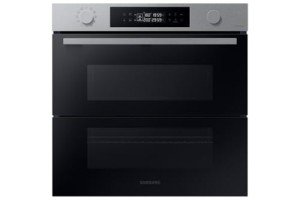The Rise of Built-In Ovens in the UK: A Comprehensive Guide
Built-in ovens have actually become a necessary feature in contemporary kitchen areas across the UK. Integrating design, functionality, and innovation, these appliances can enhance both the aesthetic and operational aspects of culinary areas. As property owners pursue effectiveness, design versatility, and technological innovation, built-in ovens have become a preferred option. This short article will check out the benefits, types, functions, and leading brands of built-in ovens offered in the UK, along with a guide to help customers make notified options.
Benefits of Built-In Ovens
Built-in ovens offer various benefits over standard freestanding models. Here are some of the essential advantages:
- Space Efficiency: Built-in ovens can be integrated into kitchen cabinetry, freeing up flooring space and producing a smooth appearance.
- Smooth Design: Available in numerous surfaces and designs, built-in ovens can elevate the general visual of the kitchen.
- Multi-Functionality: Many built-in ovens featured extra features such as convection, steam cooking, and self-cleaning options.
- Improved Accessibility: Positioned at eye level, built-in ovens offer easier gain access to, decreasing the requirement to bend down, which can be particularly useful for those with movement problems.
- Enhanced Technology: With smart technology combination, lots of built-in ovens enable users to manage cooking time and temperature from their smart devices while offering innovative cooking choices.
- Increased Resale Value: Homes equipped with modern-day built-in appliances often bring in purchasers more easily, possibly increasing residential or commercial property value.
Types of Built-In Ovens
Selecting the best kind of built-in oven is essential for conference particular cooking requirements. Here are the typical types:
| Type | Description |
|---|---|
| Single Oven | A basic choice ideal for smaller kitchens, accommodates one cooking compartment. |
| Double Oven | Uses two different compartments, allowing for synchronised cooking at various temperatures. |
| Compact Oven | A smaller sized version, ideal for minimal areas, typically including multifunctionality. |
| Steam Ovens | Usage steam for cooking, retaining moisture and nutrients, exceptional for healthier meals. |
| Convection Ovens | Flow hot air for even cooking, minimizing cooking times and energy usage. |
| Mix Ovens | Integrate microwave capabilities, offering adaptability for quick meals or re-heating choices. |
Key Features to Consider
When picking a built-in oven, it's important to consider specific essential features that suit specific needs. The table listed below highlights some of the key features to try to find:
| Feature | Description |
|---|---|
| Capability | Measured in litres; pick based upon family requirements and cooking frequency. |
| Energy Rating | Shows energy performance; search for A or higher ratings to save money on energy costs. |
| Control Options | Choices might include knobs, touch controls, or smart technology for convenience. |
| Cleaning up Type | Consider alternatives like self-cleaning or steam cleaning for simpler maintenance. |
| Guarantee & & Support | Inspect the guarantee provided by the producer for assurance. |
Popular Brands of Built-In Ovens in the UK
When investing in a built-in oven, it's recommended to think about credible brand names known for their quality and customer support. A few of the leading brands available in the UK consist of:
- Neff
- Bosch
- Miele
- Siemens
- Smeg
- AEG
- Electrolux
- Zanussi
These brand names are acknowledged for their development, dependability, and range of functions, accommodating different customer choices and spending plans.
Setup Tips for Built-In Ovens
Proper installation is vital for the performance and safety of built-in ovens. Here are some vital pointers:
- Professional Installation: Engage a certified electrical expert or installer acquainted with built-in systems to make sure security and compliance with UK guidelines.
- Space Planning: Measure cabinet dimensions exactly and think about ventilation needs.
- Check Electrical Supply: Ensure the power supply meets the oven's requirements to prevent electrical failures.
- Use Manufacturer Guidelines: Follow the producer's guidelines for setup to prevent voiding guarantees.
Regularly Asked Questions (FAQs)
1. How do I pick the best size built-in oven?
When picking a built-in oven size, think about the readily available kitchen area, your cooking routines, and household size. It's essential to measure the cabinet space precisely before acquiring.
2. Can I install a built-in oven myself?
While it's technically possible, it is extremely advised to employ an expert installer to ensure safety and to abide by structure guidelines, specifically relating to electrical connections.
3. What is the typical cost of a built-in oven in the UK?
The rate of built-in ovens differs extensively depending upon functions, capability, and brand name. Typically, consumers can expect to pay between ₤ 300 to ₤ 2,500.
4. Are built-in ovens more energy-efficient than standalone ovens?
Lots of built-in ovens are developed with energy-efficient innovation, often ranked greater than standalone designs, making them a much better long-lasting financial investment for energy cost savings.
5. What integrated electric oven and hob is needed for built-in ovens?
Routine cleaning, inspecting seals and gaskets, and ensuring ventilation slots are clear are essential for keeping the efficiency of built-in ovens.
Built-in ovens represent a blend of design, performance, and advanced cooking innovation, making them a popular option amongst UK house owners. Comprehending the advantages, types, and functions of these appliances will empower customers to make informed choices that improve their culinary experiences. With many reputable brand names readily available and an increasing focus on energy performance and smart innovation, the future of built-in ovens looks brighter than ever in the UK kitchen landscape.

